Uncovering the Legacy of the Anyuan Coal Miners: Insights from the Memorial Hall

An Essential Guide to Visiting Anyuan Coal Miners Movement Memorial Hall
In This Guide
- An Essential Guide to Visiting Anyuan Coal Miners Movement Memorial Hall
- The Rich History and Legends of Anyuan Coal Miners Movement Memorial Hall
- Main Highlights: What You Absolutely Can’t Miss
- Planning Your Visit: A Practical Guide
- Tickets: Prices, Booking, and Tips
- How to Get There: A Complete Transportation Guide
- Local Cuisine and Accommodation Nearby
- Frequently Asked Questions
- Final Thoughts on Your Trip
Discovering a Crucial Chapter in China’s Labor History
Nestled in the vibrant city of Pingxiang, Jiangxi Province, the Anyuan Coal Miners Movement Memorial Hall stands as a poignant tribute to the revolutionary spirit of China’s labor movement. This impressive memorial is more than just a museum; it encapsulates the struggles and triumphs of coal miners and railway workers during a pivotal era in Chinese history, particularly from the early 1920s to the 1930s.
As you approach the memorial, the grand staircase and the colossal statue of a young Mao Zedong greet you, setting the stage for a journey back in time. The memorial hall, originally established in 1968, showcases around 1,000 artifacts, including striking historical documents and personal items that tell the stories of those who fought for workers’ rights. Among the treasures housed here is a handwritten ballad titled “A Story of Laborers,” a collective creation by the miners that highlights their aspirations and hardships.

Anyuan Coal Miners Movement Memorial Hall.
The exhibits are thoughtfully organized into six sections, each narrating a different facet of the labor movement. You’ll learn about the formation of the Chinese Communist Party (CPC) and its leaders, who played vital roles in rallying the workers and fostering a spirit of unity against oppression.
While the hall offers a wealth of information, travelers should be aware that English translations are limited, which can sometimes make the experience a bit challenging for non-Chinese speakers. However, the rich visual displays and the palpable sense of history make it a must-visit for anyone interested in the interplay of labor rights and revolutionary fervor in China.
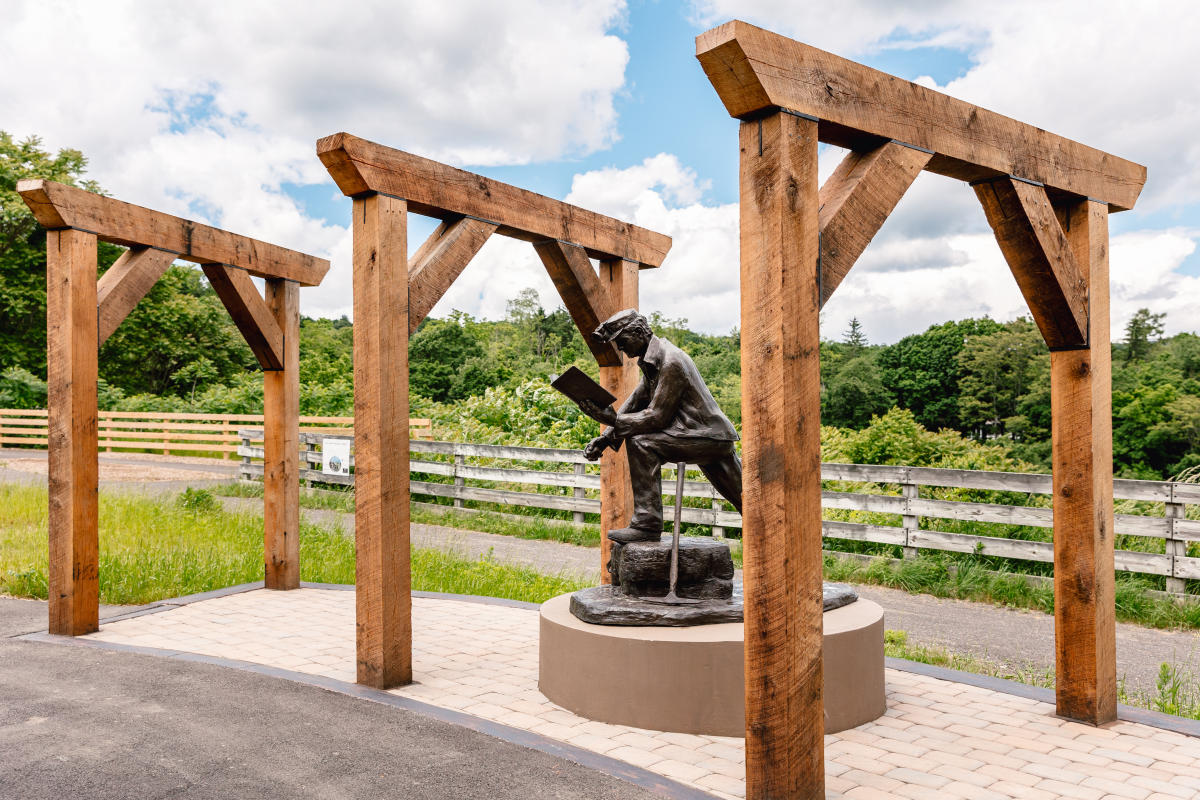
Anyuan Coal Miners Movement Memorial Hall.
Whether you are an avid history buff or simply curious about the cultural fabric of modern China, a visit to the Anyuan Coal Miners Movement Memorial Hall promises to be both enlightening and inspirational. As you wander through this memorial, you’ll not only gain insight into the struggles of the past but also appreciate how these events have shaped the present-day landscape of Chinese society.
The Rich History and Legends of Anyuan Coal Miners Movement Memorial Hall
A Glimpse into the Legacy of the Anyuan Coal Miners Movement
Nestled in the historic town of Anyuan, the Anyuan Coal Miners Movement Memorial Hall stands as a testament to the rich tapestry of labor activism and revolutionary fervor that characterized early 20th-century China. This memorial hall not only commemorates the coal miners’ struggle but also weaves together the narratives of resilience, unity, and the fight for rights that resonate through the annals of Chinese history.
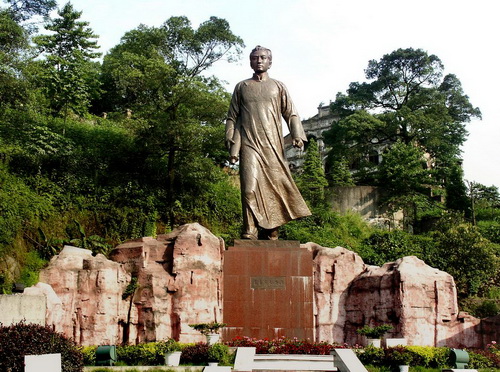
Anyuan Coal Miners Movement Memorial Hall.
Historical Context
The origins of the Anyuan labor movement trace back to the early 1920s, a period marked by profound social and political upheaval in China. Anyuan, then a burgeoning industrial center in Jiangxi Province, became the epicenter of labor activism, with coal miners at the forefront of the struggle against exploitation. The Anyuan Railway and Mine Workers’ Club was established in 1956, laying the groundwork for what would evolve into a significant historical site.
By 1968, the club transformed into a memorial hall, officially opened to the public in 1969, which later adopted its current name in 1984. Over the decades, this site has become a crucial repository of artifacts and documents that illuminate the labor movement’s impact on the Communist Party of China (CPC) and its leaders, including Mao Zedong.
The Struggles and Triumphs
The memorial hall features exhibits that meticulously chronicle the labor movement in Anyuan from 1921 to 1930. Visitors can explore the intricate details of how the CPC, alongside notable figures such as Liu Shaoqi and Chen Tanqiu, fused Marxist ideology with local labor struggles.

Anyuan Coal Miners Movement Memorial Hall.
Among the hall’s most cherished artifacts is a handwritten ballad titled “A Story of Laborers,” a monumental piece composed by Anyuan workers that captures the essence of their collective aspirations and hardships. This document is not merely a literary treasure but a reflection of the spirit of camaraderie that fueled the miners’ activism.
Legends and Cultural Significance
The Anyuan Coal Miners Movement Memorial Hall is not just a collection of historical documents; it also embodies the legends of perseverance and bravery that have inspired generations. The coal miners’ strikes of the 1920s are steeped in folklore, often depicted as a David versus Goliath struggle against oppressive forces. These narratives have become a vital part of the cultural fabric of the region, highlighting the miners’ determination to secure their rights and improve their living conditions.
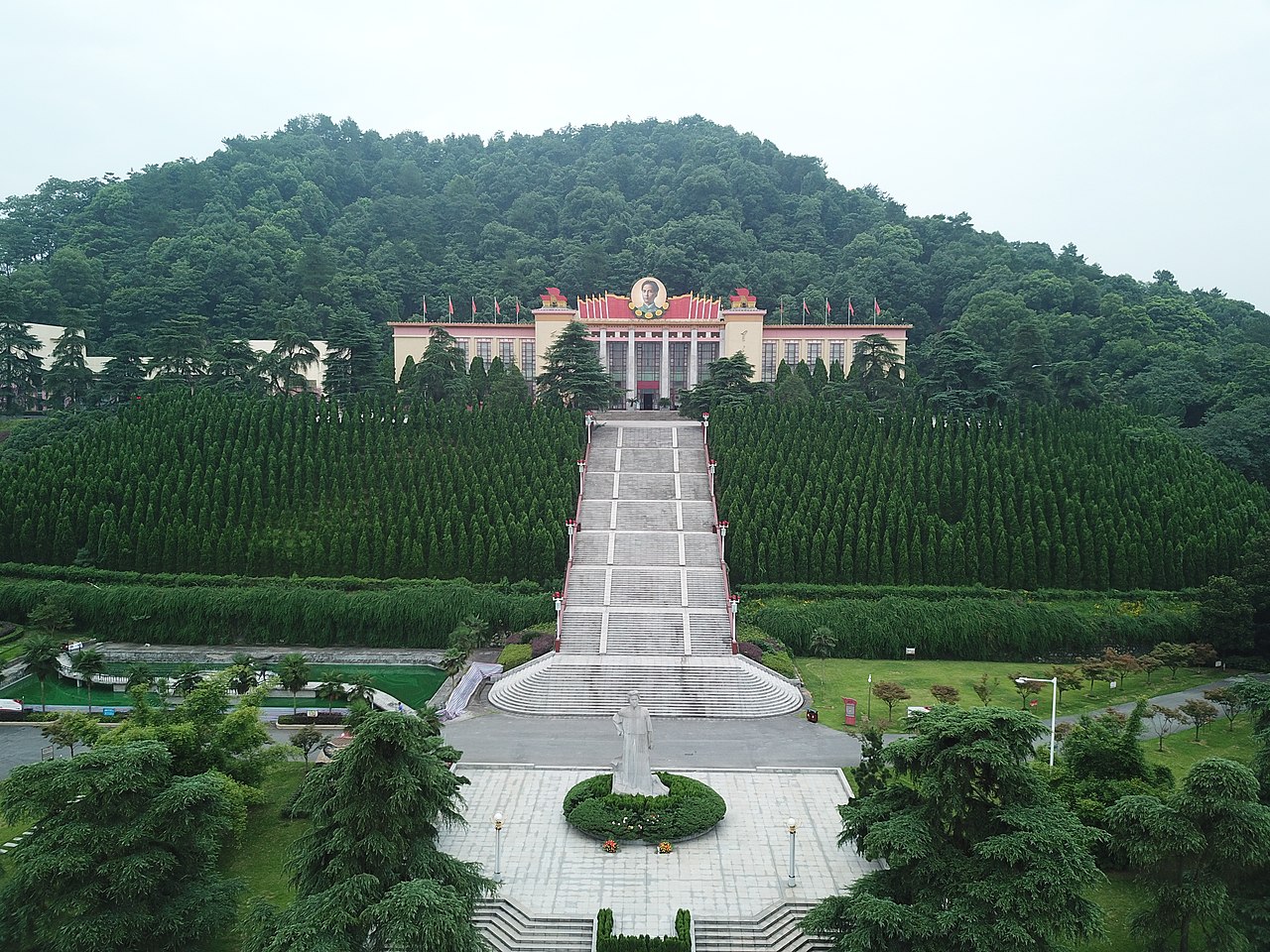
Anyuan Coal Miners Movement Memorial Hall.
The hall divides its content into six distinct sections, each presenting a different facet of the labor movement, from the organization of strikes to the collaboration between workers and peasants. This multifaceted approach allows visitors to grasp the complexities of the struggle and the eventual rise of the revolutionary united front, which fundamentally altered China’s socio-political landscape.
A Visit Worth Making
For international travelers seeking an authentic understanding of China’s labor history, the Anyuan Coal Miners Movement Memorial Hall offers a profound experience. While the exhibits may lack extensive English translations, the visual narratives and historical artifacts speak volumes. In addition to the memorial hall, the surrounding area is rich in other cultural and natural attractions, making it an ideal stop for those interested in exploring the historical depths of the region.
In conclusion, the Anyuan Coal Miners Movement Memorial Hall serves as a poignant reminder of the sacrifices and triumphs of the labor movement in China. It invites visitors to reflect not only on the historical events that transpired but also on the enduring spirit of those who fought for justice and equality. This site is a must-visit for anyone keen to delve into the rich history and resilient culture that shaped modern China.
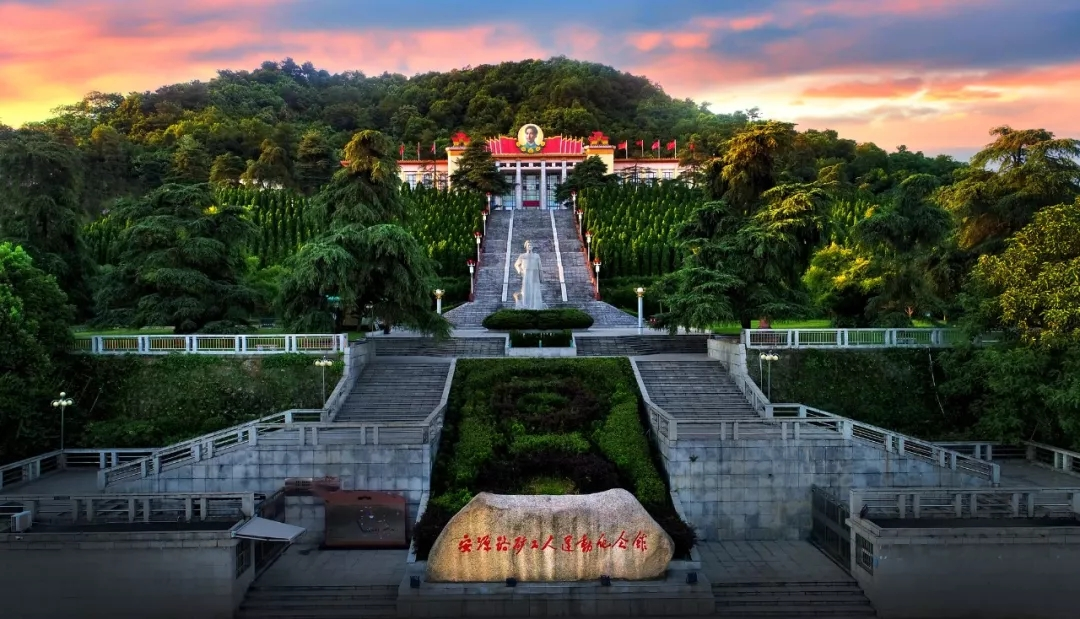
Anyuan Coal Miners Movement Memorial Hall.
Main Highlights: What You Absolutely Can’t Miss
Discovering the Anyuan Coal Miners Movement Memorial Hall
Nestled in the heart of Pingxiang, Jiangxi Province, the Anyuan Coal Miners Movement Memorial Hall stands as a testament to the revolutionary spirit that shaped modern China. This historical site is more than just a museum; it’s a vivid portal into China’s labor movement, particularly the coal miners’ strike that marked a significant chapter in the early life of Mao Zedong. Here are the highlights you absolutely can’t miss during your visit:
1. The Grand Entrance
As you approach the memorial hall, you’ll be greeted by a grand staircase leading up to a colossal statue of Mao Zedong. This impressive monument sets the tone for the historical narratives housed within and serves as a reminder of Mao’s influence on the labor movement.
2. Exhibits of Historical Significance
The museum features over 1,000 artifacts, including around 200 Class One exhibits. Among these, the Anyuan Monthly Periodical, worker’s share certificates, and handwritten literary works like “A Story of Laborers” offer profound insights into the socio-political climate of the time.
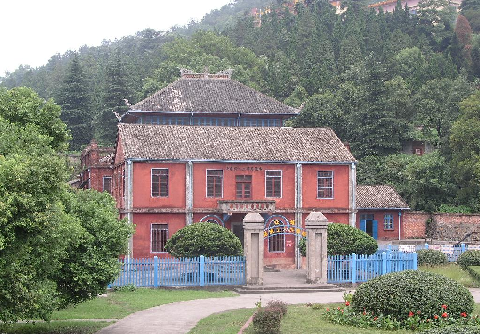
Anyuan Coal Miners Movement Memorial Hall.
3. In-Depth Historical Narratives
The memorial hall is divided into six thematic sections, detailing the labor movements from 1921 to 1930. Each section captures crucial events, from the establishment of the Communist Party to the organization of strikes and the mobilization of peasants. This is an invaluable opportunity to explore how Marxism-Leninism was integrated with local labor struggles.
4. Artifacts and Documents
Though the majority of exhibits lack English translations, the artifacts themselves are compelling. Look for photographs, propaganda posters, and personal documents that tell the stories of the workers involved in these movements. These items serve as important reminders of the struggles faced during this transformative era.
5. The Gift Shop
Don’t forget to stop by the small gift shop, where you can find a variety of memorabilia, including statues of Mao and themed stamps. These items make for unique souvenirs that capture the essence of your visit.

Anyuan Coal Miners Movement Memorial Hall.
6. Surrounding Attractions
The memorial hall is conveniently located near other notable sites, such as the Anyuan Coal Mines Lane and Anyun Forest Park. Consider extending your visit to explore these nearby attractions, which reflect the natural beauty and industrial heritage of the region.
7. Cultural Context
Understanding the significance of the Anyuan Coal Miners Movement provides deeper appreciation for China’s modern history and its ongoing socio-economic transformations. Engaging with the narratives presented here will enrich your understanding of the country’s past and present.
A Journey Through Time
Visiting the Anyuan Coal Miners Movement Memorial Hall is not just an educational experience; it is a journey through the heart of China’s revolutionary history. As you walk through the halls and reflect on the struggles and triumphs of the labor movement, you’ll gain a new perspective on the foundations of modern Chinese society. Make sure this historical gem is on your itinerary when exploring the rich tapestry of China’s past.
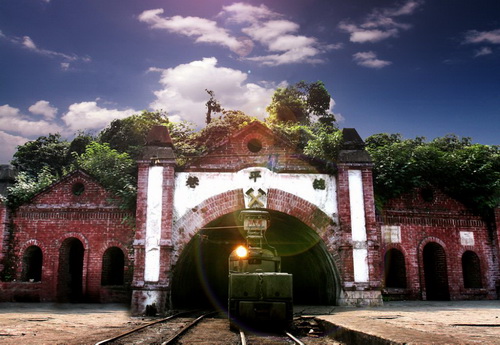
Anyuan Coal Miners Movement Memorial Hall.
Planning Your Visit: A Practical Guide
Discovering the Anyuan Coal Miners Movement Memorial Hall
When planning your visit to the Anyuan Coal Miners Movement Memorial Hall (萍乡安源路矿工人运动纪念馆) in Pingxiang, Jiangxi Province, you’ll embark on a journey through a pivotal chapter in Chinese history. This site pays homage to the labor movements that shaped modern China, particularly the coal miners’ strike that played a crucial role in Mao Zedong’s early political life. Here’s everything you need to know to make the most of your visit.
Getting There
Location:
The memorial hall is situated in Anyuan Town, part of Pingxiang City in Jiangxi Province. The site is easily accessible by public transportation, taxis, or private vehicles.
Transportation Options:
– By Train: Pingxiang has a train station with services from major cities. From the station, you can take a taxi or local bus to the memorial hall.
– By Bus: Several bus routes connect Pingxiang to neighboring cities, and local buses can take you directly to Anyuan.
– By Car: If you are driving, the memorial hall is well-signposted, and parking facilities are available nearby.
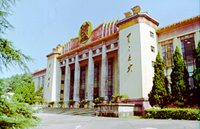
Anyuan Coal Miners Movement Memorial Hall.
Opening Hours
The memorial hall is open to visitors daily, typically from 9 AM to 5 PM. It is advisable to check locally for any changes to these hours, especially around public holidays or special events.
Admission
- Entry Fee: There is usually a nominal fee for entrance, but it’s best to confirm this at the time of your visit. Discounts may be available for students and seniors.
- Guided Tours: Consider joining a guided tour for a more in-depth understanding of the exhibits and historical context. While some information is available in English, a guide can provide valuable insights.
What to Expect
Exhibits:
The memorial hall houses around 1,000 artifacts, including significant documents from the labor movement, such as the Anyuan Monthly Periodical and various worker cooperative certificates. Key exhibits focus on the historical timeline from 1921 to 1930, highlighting how labor movements were intertwined with the rise of the Communist Party of China (CPC).
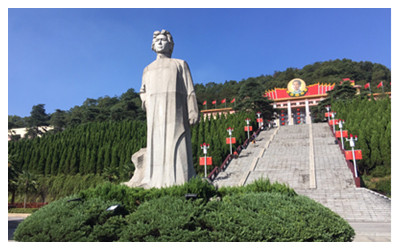
Anyuan Coal Miners Movement Memorial Hall.
Architecture:
Upon entering, you’ll be greeted by a grand staircase and a striking statue of Mao Zedong. The memorial hall’s architecture reflects its historical significance and the revolutionary spirit of the era.
Cultural Insight:
While many exhibits may lack English translations, the site serves as a fascinating window into the socio-political dynamics of early 20th-century China, showcasing the struggles and achievements of the workers.
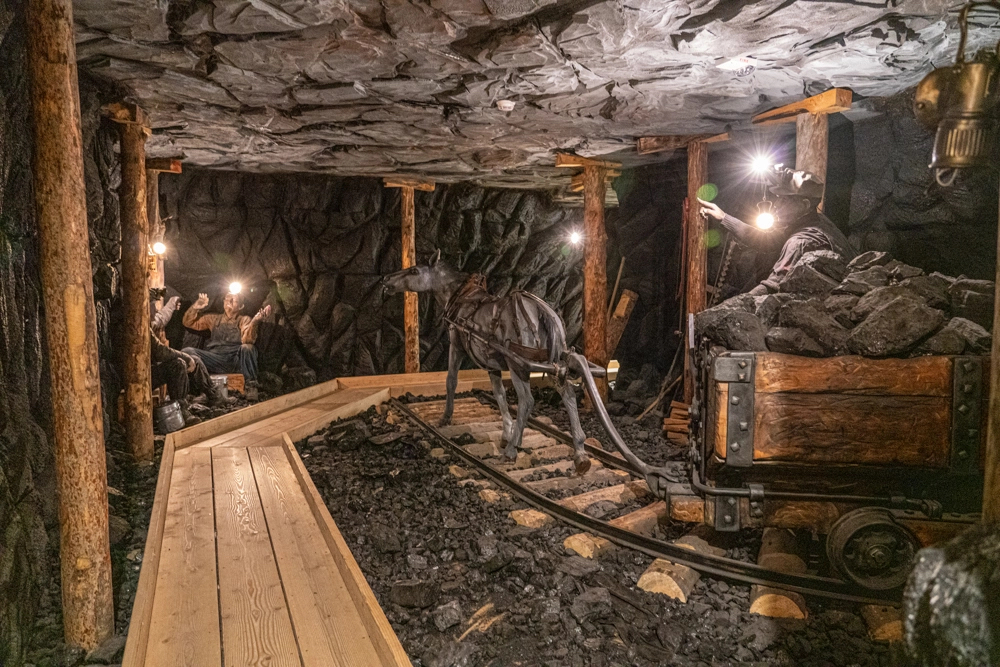
Anyuan Coal Miners Movement Memorial Hall.
Nearby Attractions
After your visit, consider exploring the following nearby sites to enhance your cultural experience:
- Anyuan Forest Park: A scenic location perfect for a leisurely walk or a picnic.
- Baoji Temple: A beautiful architectural site that offers a glimpse into local religious practices.
- E’hu Park: Ideal for a relaxing afternoon, featuring lush greenery and tranquil lakes.
Dining Options
While at the memorial hall, you might want to try local cuisine. A recommended spot is PingShui XiangFeng, a nearby restaurant known for its authentic Jiangxi dishes.
Practical Tips
- Language: While some staff may speak limited English, having a translation app on your phone can be helpful.
- Photography: Photography is generally allowed, but be respectful of the memorial’s significance and avoid flash in exhibits.
- Timing Your Visit: Early morning or late afternoon visits can offer a quieter experience, allowing for more reflection and exploration.
Final Thoughts
The Anyuan Coal Miners Movement Memorial Hall is not merely a museum; it is a testament to the resilience and determination of the labor movement in China. As you walk through its halls, you will gain a deeper appreciation for the sacrifices made by those who fought for workers’ rights. Plan your visit with an open mind and heart, ready to absorb the rich history that this remarkable site has to offer.
Tickets: Prices, Booking, and Tips
Visiting the Anyuan Coal Miners Movement Memorial Hall is a fascinating journey into China’s revolutionary past, particularly the labor movements that shaped modern Chinese society. Here’s everything you need to know about ticket prices, booking, and tips for your visit.
Ticket Information
-
Entry Fee: Admission to the memorial hall is typically free, making it an accessible destination for those interested in understanding the historical significance of the coal miners’ movement.
-
Guided Tours: While entry is free, consider opting for a guided tour. These tours often come at a nominal fee (approximately 30-50 CNY, or about $5-8 USD) and can enhance your experience with in-depth insights into the exhibits and the history they represent.
Booking Your Visit
-
Advance Reservations: It’s advisable to check the memorial hall’s official website or contact them directly if you are planning to visit during peak tourist seasons or if you are part of a larger group. Reservations for guided tours can often be made online or via phone.
-
Opening Hours: The memorial hall typically operates from 9 AM to 5 PM, but hours may vary. Always verify current hours before your visit to avoid disappointment.
Tips for a Smooth Experience
-
Language Considerations: While some exhibits feature English translations, many do not. Consider downloading a translation app on your phone or bringing a phrasebook to help navigate the information presented.
-
Explore Nearby Attractions: The memorial hall is located near several other notable sites, such as the Anyuan Coal Mines Lane and AnYuan GongYun ShiQi LianZheng JianShe ChenLieGuan. Plan your itinerary to make the most of your visit to Pingxiang.
-
Local Cuisine: After exploring the memorial hall, treat yourself to local delicacies. There are restaurants nearby offering traditional Jiangxi cuisine, providing a perfect end to your historical excursion.
-
Gift Shop: Don’t forget to stop by the small gift shop within the memorial hall. It features unique memorabilia, including Mao statues and stamps, which could serve as thoughtful souvenirs of your visit.
By keeping these details in mind, you can ensure a rewarding and enriching experience at the Anyuan Coal Miners Movement Memorial Hall, deepening your understanding of China’s labor history and its cultural significance.
How to Get There: A Complete Transportation Guide
Navigating Your Way to the Anyuan Coal Miners Movement Memorial Hall
Visiting the Anyuan Coal Miners Movement Memorial Hall in Pingxiang, Jiangxi Province is a journey steeped in the rich tapestry of Chinese labor history. This memorial site, dedicated to the labor movements that shaped modern China, is accessible via various modes of transportation. Here’s your complete guide to getting there.
Arriving by Air
The nearest major airport to Pingxiang is Yichun Mingyueshan Airport (YIC), located approximately 40 kilometers away. From there, you can choose from the following options:
- Airport Shuttle: Check for local shuttle services that may take you directly to Pingxiang.
- Taxi: Taxis are readily available at the airport. A direct ride to the memorial hall will take about an hour.
- Car Rental: For those wanting to explore the surrounding areas, consider renting a car from the airport.
If you’re arriving from larger international cities, you might first land at Nanchang Changbei International Airport (KHN). From Nanchang, you can travel to Pingxiang by train or bus.
By Train
Pingxiang is well-connected by rail, making it an excellent option for travelers. Here’s how to do it:
-
High-Speed Train: Take a high-speed train from Nanchang to Pingxiang. The journey takes approximately 1.5 to 2 hours. Once at the Pingxiang Railway Station, you can catch a taxi or use a ride-hailing app to get to the memorial hall.
-
Regular Trains: If you prefer a more economical choice, regular trains are available, though they may take longer. Check schedules in advance, as services can vary.
By Bus
Intercity buses operate frequently from major cities in Jiangxi Province to Pingxiang. Here’s how to navigate this option:
- Long-Distance Buses: Buses from cities like Nanchang or Yichun will arrive at the Pingxiang Bus Station. From there, you can take a taxi or local transport to the memorial hall.
Local Transportation in Pingxiang
Once you arrive in Pingxiang, getting to the memorial hall is straightforward:
-
Taxi: Taxis are readily available throughout the city. The ride from the bus or train station to the memorial hall should take about 15-20 minutes.
-
Ride-Hailing Apps: Apps like Didi Chuxing are widely used and can be a convenient option for international travelers.
-
Public Buses: If you’re feeling adventurous, local buses are an option. Check the route maps at the bus stops or ask locals for assistance.
Accessibility Considerations
The Anyuan Coal Miners Movement Memorial Hall is designed to be accessible to visitors. If you have mobility concerns, consider contacting the memorial hall in advance to inquire about any specific accommodations available.
Final Tips
-
Language: While some English signage exists, it may be limited. Having a translation app or basic Mandarin phrases can enhance your experience.
-
Timing Your Visit: The memorial hall is open from 9 AM to 5 PM. Plan your visit accordingly to fully explore the exhibits.
With this guide, you’re all set to embark on a historical journey to the Anyuan Coal Miners Movement Memorial Hall. This site not only reflects the struggles and triumphs of the labor movement but also offers a deeper understanding of China’s socio-political history. Enjoy your visit!
Local Cuisine and Accommodation Nearby
When visiting the Anyuan Coal Miners Movement Memorial Hall, immerse yourself not only in the rich tapestry of Chinese labor history but also in the local flavors and hospitality that Pingxiang has to offer. Here are some recommendations for nearby dining and accommodation that will enhance your cultural experience.
Local Cuisine
PingShui XiangFeng
Located just a short drive from the memorial hall, PingShui XiangFeng specializes in authentic Jiangxi cuisine. Their menu features a variety of local dishes, including the region’s famous rice noodles and spicy pickled vegetables. Diners can enjoy the warm atmosphere and traditional decor, making it a perfect spot to reflect on your visit while savoring the tastes of the area.
What to Try:
– Jiangxi Rice Noodles: Soft and chewy, often served in a savory broth with assorted toppings.
– Spicy Fish Head Stew: A local delicacy that showcases the bold flavors characteristic of Jiangxi cooking.
– Steamed Bamboo Shoots: Fresh and crunchy, these are often paired with chili sauce for an added kick.
Accommodation
Pingxiang International Hotel
For travelers seeking comfort and convenience, the Pingxiang International Hotel is an excellent choice. Located within a reasonable distance from the memorial hall, this hotel offers modern amenities, including free Wi-Fi, a fitness center, and an on-site restaurant serving both local and international dishes. The attentive staff are well-versed in catering to the needs of international guests, ensuring a pleasant stay.
What to Expect:
– Room Features: Spacious rooms with air conditioning, flat-screen TVs, and en-suite bathrooms.
– Dining Options: An on-site restaurant that provides a mix of local Jiangxi cuisine and Western favorites.
– Convenient Location: Close to several attractions, including Anyuan Coal Mines Lane and E’hu Park, making it easy to explore the area.
Additional Tips
- Cultural Experience: Consider dining at local eateries where you might engage with local residents and learn more about their culinary traditions.
- Explore Local Markets: If time permits, visiting nearby markets can offer an authentic taste of local life and the opportunity to try street food favorites.
- Booking in Advance: Depending on the season, accommodations can fill up quickly. It’s advisable to book your stay in advance to secure the best options.
By indulging in the local cuisine and enjoying the hospitality of Pingxiang, you not only enrich your visit to the Anyuan Coal Miners Movement Memorial Hall but also create lasting memories of this historically significant region.
Frequently Asked Questions
Frequently Asked Questions
1. What is the Anyuan Coal Miners Movement Memorial Hall?
The Anyuan Coal Miners Movement Memorial Hall, located in Pingxiang City, Jiangxi Province, is a museum dedicated to the history of labor movements among coal miners and railway workers in the region. It highlights the significant events from the early 20th century that contributed to the rise of the Chinese Communist Party and the labor movement.
2. When was the memorial hall established?
The memorial hall was originally founded as the Anyuan Railway and Mine Workers’ Club in 1956. It was converted into an exhibition hall in 1968 and opened to the public in 1969. The venue was officially named the Anyuan Coal Miners Movement Memorial Hall in August 1984.
3. What can I expect to see at the memorial hall?
Visitors can explore a range of exhibits, including approximately 1,000 artifacts related to the labor movement, such as historical documents, photographs, and personal items. Key displays focus on the strikes and social movements that took place between 1921 and 1930, showcasing the role of prominent figures like Mao Zedong and Liu Shaoqi.
4. Is there English translation available for the exhibits?
While some exhibits may have English translations, many do not. It is advisable to come prepared with some background knowledge of the labor movements in China or consider hiring a local guide who can provide insights in English.
5. Are there any notable artifacts on display?
Yes, among the notable artifacts are the “Anyuan Monthly Periodical,” a share certificate from the workers’ cooperative, and a handwritten collective poem titled “A Story of Laborers,” which is significant in modern Chinese literature.
6. How long should I plan to spend at the memorial hall?
A visit to the Anyuan Coal Miners Movement Memorial Hall typically takes about 1 to 2 hours, depending on your interest in the exhibits and whether you choose to read the materials thoroughly.
7. Is the memorial hall accessible to visitors with disabilities?
The memorial hall is designed to accommodate visitors with disabilities, featuring accessible entrances and pathways. However, it’s recommended to check in advance to ensure a comfortable visit.
8. What are some nearby attractions?
After visiting the memorial hall, you might explore nearby attractions such as Anyuan Forest Park, the Anyuan Coal Mines Lane, and various local museums in Pingxiang, which collectively offer a deeper insight into the region’s history and culture.
Final Thoughts on Your Trip
As you wrap up your visit to the Anyuan Coal Miners Movement Memorial Hall, take a moment to reflect on the profound historical and cultural narratives that this site embodies. Nestled in the heart of Pingxiang, this memorial is more than just a museum; it is a testament to the resilience and determination of a community that played a pivotal role in shaping modern China.
Key Takeaways from Your Visit:
-
Historical Significance: The memorial hall chronicles the labor movements of the early 20th century, particularly the coal miners’ strikes that were instrumental in the rise of the Chinese Communist Party. Understanding these events provides a vital context for anyone interested in China’s revolutionary history.
-
Rich Artifacts: With a collection of around 1,000 items, including original documents and literature that narrate the struggles and triumphs of the workers, the hall offers an intimate glimpse into the lives of those who fought for their rights.
-
Cultural Reflections: The presence of artifacts related to Mao Zedong and the labor movement highlights the intersection of culture and politics in Chinese history. This is a unique opportunity to see how the past continues to influence contemporary society.
-
Engagement with Local Narratives: While some exhibits may lack English translations, the emotional weight of the displays transcends language, inviting visitors to engage with the stories of struggle and solidarity through the power of imagery and symbolism.
As you leave, consider how the echoes of the past resonate in today’s China. Your visit to the Anyuan Coal Miners Movement Memorial Hall has not only enriched your understanding of labor history but has also connected you to the enduring spirit of those who came before. This is a place where memories are preserved, and lessons are learned—an essential stop for any traveler seeking to grasp the complexities of Chinese history and culture.
Final Thoughts:
Embrace the narratives you encountered, share them with others, and let the stories of Anyuan inspire your journey forward. Safe travels, and may your exploration of China’s rich tapestry of history continue to unfold!